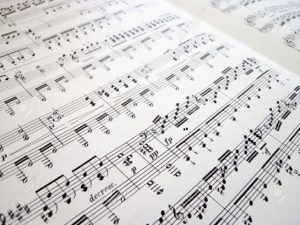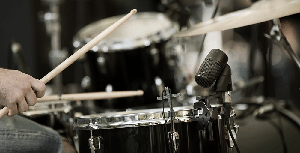
I think you’ll agree with me when I say:
It’s REALLY hard to learn a piece of music effectively or learn to play piano unless you spend hours practicing it .
Or is it?
Well, it turns out, you can dramatically reduce your time spent learning a new piece of music following eight simple steps…
…8 steps that’ll help you learn to play piano fast, or learn to read sheet music in half the time.
And in today’s post (and video) I’m going to show you what those 8 steps are and exactly how you can add them to your practice.
But First, A Quick Story…
As kids, my brother and I took swimming lessons one summer. We were all thrilled and ready to splash in the pool but ...
… we didn’t get to swim for many days.
Instead, we had to learn many things separately: floating, kicking our legs (holding on to the side of the pool first and then using kickboards to go forward in the pool), doing the front crawl strokes, and turning our heads to learn breathing.
Finally, at the end of a week, we got to put everything together and swim for the first time.
You see, learning a piece of music is very similar to learning how to swim. In fact, most tasks can be done with these steps: make a plan, break down the big task into smaller steps, take one step at a time, and troubleshoot when necessary.
With that insight, let’s jump into the 8-step process of learning a new piece of piano music in half the time.
Step #1: Read through the entire score
By “read through the score,” I don’t mean with your instrument. It’s tempting to pick up your instrument and start playing as if you are reading a book.
But at LPM, we do things efficiently. What we need is a plan to learn a piece.
Look:
When you travel to a new city, you first look at a map and understand your route before taking the walk or the ride. So why not read through the score first to understand the piece before playing it with an instrument?
You can either read through the notes carefully from the first note to the last or do several rounds of score reading and pay attention to different things every time.
For example, you can check all structural things, such as key areas, time signatures, double bars, or repeat signs for the first round. Then you can look at dynamic and tempo markings as well as any instructions from the composer. Finally, you can read through the piece closely and try to sound it out in your head.
Somewhere in these steps, you should also look up any foreign words that you are not familiar with and make notes in the score. (Our article on 110 musical terms might be of help.) A general overview can give you a blueprint of the piece.
Besides the musical contents, it is also important to take a step back and understand the background information about the piece—styles, periods, and composers.
[clickToTweet tweet="Knowing when the piece was composed can give you insight into how it should be played" quote="Knowing when the piece was composed can give you insight into how it should be played." theme="style1"]
For example, you might need to add ornamentations for a Baroque piece but follow the composer’s instructions closely if it’s a twentieth-century work. Knowing the composer, or even the composer’s other works can help you better convey the style or the context.
Step # 2:Listen to recordings, Make notes
Some people like to listen to recordings.
Before I learn a saxophone piece, I tend to look up if any of my favorite saxophonists—Arnold Bornkamp or Nobuya Sugawa—had recorded it.
Some people don’t want to be influenced too much and like to figure out their interpretations first. If you decided to listen to others’ renditions, listen to the recordings with the score and jot down anything worth noting. While not everyone follows this step and it is not even mandatory, but it is a very effective way to speed up your learning.
Step # 3:Play through the entire piece once, slowly. Again, make notes.
After you have read through and listened to the piece, it’s now time for to play through it.
Before you go all guns blazing, don’t forget the purpose of this step is not to play it as if you are performing it. Rather, you are studying the piece through your instrument.
Try to experience the phrasing, structure, and how the sentences follow or respond to each other. Stop anytime to make notes in the score. Write down fingerings when necessary.
By the time you finish this step, you should have general ideas like its title and form to specific things such as phrase structures, textures, articulations, fingerings, etc.
Also, if the piece is long, play through one big chunk slowly each time.
Step # 4:Break the piece into workable chunks.
Next, it’s time to find some logical breaks in the piece of music you are learning.
You might find it easier to break the piece into two halves, the two halves into two more halves, and then smaller phrases in the four sections. Or you might want to go from the beginning, mark any places where you can take a break, and see how these phrases can be combined into larger sections.
A quick and easy way to find the breaks is to imagine playing music as if you are talking.
When you talk, you take breaths where commas and periods should be in a written passage. It’s more natural for wind players to identify places for breathing, but the analogy is applicable to pianists, guitarists, and drummers.
The exact method varies from piece to piece, player to player. So you just have to find what works best for you. In the case of the Lully piece in the video, the score clearly indicates a three-part structure: ABA. Within each section, the phrases give clues of where the breaks are.
Step # 5: Use various techniques for different passages
Now that you have broken the piece into smaller chunks, you can learn them one by one.
Each section will take different amount of time. Some sections might be straightforward and you only need to make sure that you have followed all the instructions. Some sections might be technically or musically challenging, in which case you want to identify the difficult aspects and find ways to tackle them.
One important point to remember:
When you find one section particularly challenging, take time to learn it and know that this will build your technique. If you do so for each piece you learn, you’ll find that pieces of the same level become easier and you are able to more quickly learn more difficult works.
In the video above, our instructor Michelle Huang demonstrates the ways to learn a piece of music by Lully. You might find many of the steps she discusses useful, such as practice each hand separately, clap to count the beats and figure out the rhythm, practice similar phrases together, start from slow, etc. You’ll have to find various ways to tackle other challenges.
For instance:
If you want to play evenly, you might try a technique “metronome displacement” our drum instructor Brendan Bache talks about. If a passage has complicated rhythms, you can vary the rhythm.
For example, you can keep the pitches and change the rhythm entirely. You can play through all the notes as if they are all quarter notes, eighth notes, and sixteenth notes. Then you can play them as if they are two-quarter notes followed by four eighth notes.
Step # 6: When you have practiced every section of the piece, put them together
When you have tackled all passages, it’s now time to put them together. This is, again, not to play it as if you are performing it but to diagnose any problems. By putting smaller sections together, you might be able to spot problem areas that you did not notice before. Perhaps the transitions need work, or the longer sections require different places for breathing.
Moreover, this step helps you attend to the big picture, after spending so much time looking at the smaller picture.
If you have not done it, this is also the time to focus on musicality. After all the rigorous practice on techniques, you should feel more at ease when you play and have more mental power to think about the music. Try to figure out the message you want to convey.
Is it a picture or a poem you would like your audience to envision?
Is it a love letter or personal diary?
In other words, after you master the technical aspects, try to communicate the message and tell the story.
I also want to note that if the piece you are learning is long, put some short sections into long sections first before you play the entire piece.
Step # 7: Repeat steps 5 and 6 again if you run into any problems
You know, in this last step, you would have run into new problems and written them down. Now it’s time to devise ways to tackle them and then play through a big chunk or the entire piece.
This process is similar to when programmers catching bugs. After they catch a bug, they have to run the program again to spot anything not working properly.
Step # 8: Time to find an audience to perform the piece!
After so many steps and hours of practicing, it’s time to share your music with someone!
These steps might seem arduous, but they should help you learn the piece effectively. In the long run, they save you time. More importantly, they build your skills and make you a better player.
Now It’s Your Turn
You’ve just seen my 8-step process to learn a piece of music quickly and effectively…
Now it’s time to put these steps into practice.
Once you’ve done that, take a second and leave a comment.
I’d love to know what you think of the post.
You might also be interested in:
Raring to play the piano like a pro?
Start learning with our 30-day free trial! Try our piano courses!About Liberty Park Music
LPM is an online music school. We teach a variety of instruments and styles, including classical and jazz guitar, piano, drums, and music theory. We offer high-quality music lessons designed by accredited teachers from around the world. Our growing database of over 350 lessons come with many features—self-assessments, live chats, quizzes etc. Learn music with LPM, anytime, anywhere!











thanks for the information
Great suggestions thank you